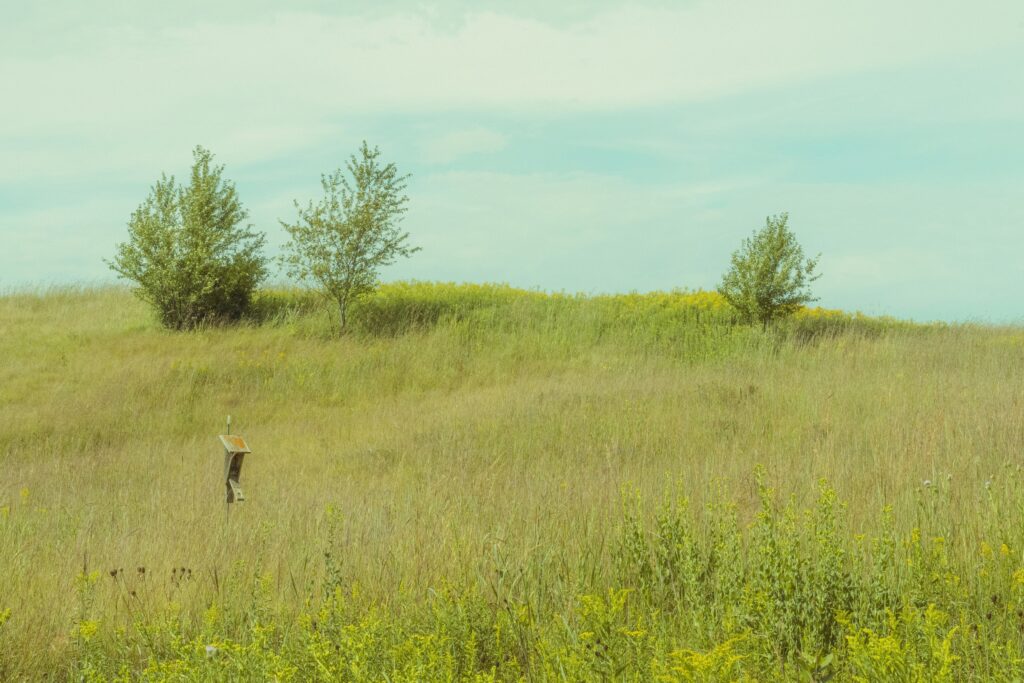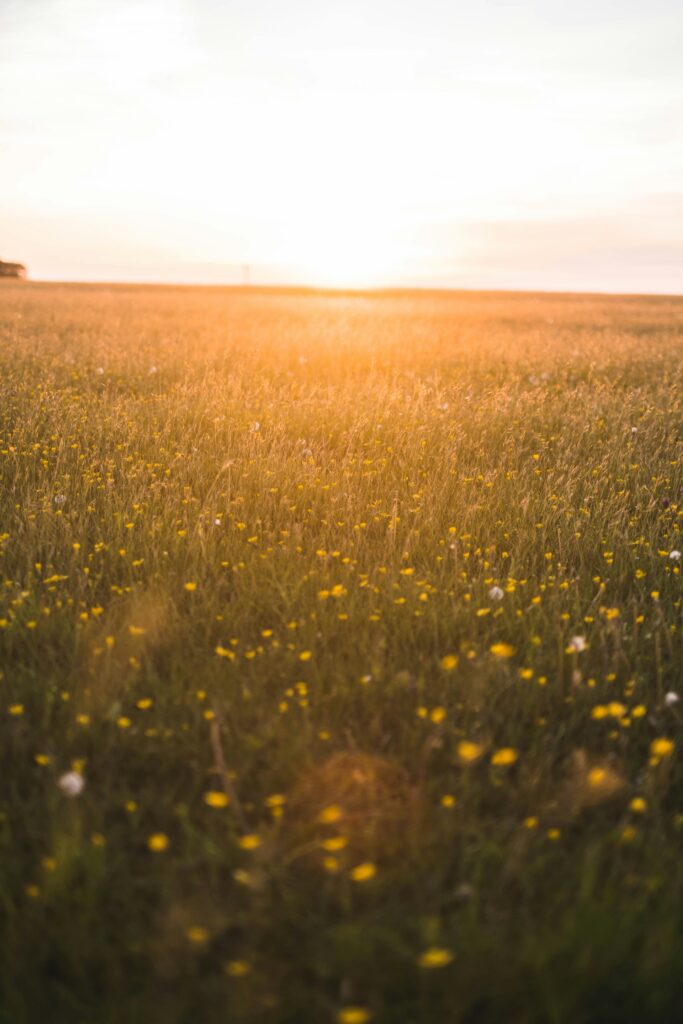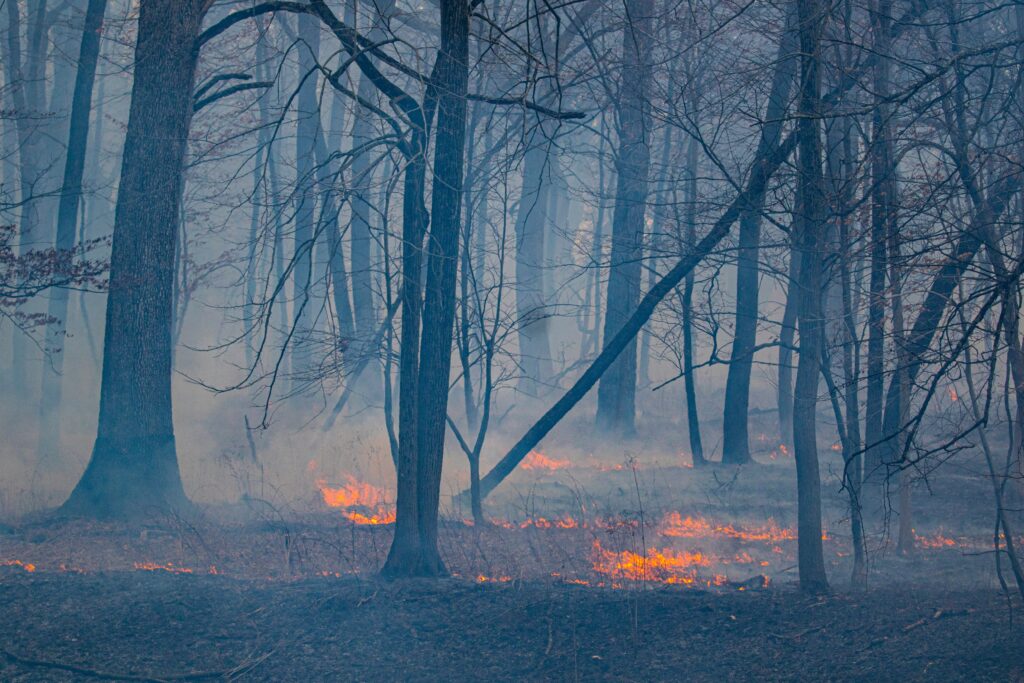
Prairie Restoration for Spring Time
Do you have prairie on your property? Spring is the perfect time to think about everything from prescribed fire to invasive species on your property.
By Denise Thornton
As the air warms and any snow melts, this is a good time to plan your prairie care. The smoke plumes on the horizon are a reminder that spring can be the right moment to burn a prairie.

“There are many kinds of prairies, but one of the best things you can do for any grassland ecosystem is to organize a prescribed fire,” says Eric Schlender of EC3 Environmental Consulting Group. His firm has been offering land restoration, tree care, and landscaping services since 2008. With a background that includes working for The Aldo Leopold Foundation and Pheasants Forever, Schlender oversees the ecological restoration aspects of EC3. “A burn reduces thatch and fuel loading,” Schlender continues, “but its main benefit is setting back unwanted vegetation, warming the ground by exposing it to the sun, and kickstarting desirable warm season plants.”
“One of the biggest challenges I see clients facing,” warns Schlender, “is when Eurasian cool-season grasses start to overtake a prairie. (Learn more about warm- and cool-season grasses.) To deal with these grasses, you have to commit to using herbicides, prescribed fire, or both. And this is site specific – every single prairie needs its own prescription. If cool-season grasses are a problem, burning too early will promote them instead of setting them back. Burning later, you may ding a few flowers, but Eurasian cool-season grasses will only be set back if burned while they are actually growing.”
Mike Engel, private land biologist with the U.S. Fish and Wildlife Service, who has been doing prairie restorations on private lands for 25 years, adds, “The word prescribed in prescribed burns is essential. You don’t just go to the doctor and say, ‘Give me some medicine.’ First you describe your concern, and the doctor goes through a list of questions to make sure you get the right treatment. That is a good model for prairie establishment or maintenance. You need to ask, what is my site history? What is my soil type? What are my goals. These will help determine how you want to burn.”

As to the question of whether to burn in the spring or the fall, Engel says, “In the long term, burning every spring could favor grasses more than flowers. Fall burns can be good, but we have a narrow window for fall burns in Wisconsin. The days are short, and the dew is burning off at 10 a.m., but it’s too humid by three. You can set a goal to burn in the fall, but if it doesn’t happen, then burn the next spring.”
“Up front you should decide what is most important,” Engel continues. “If you are really interested in bumble bees and flowers, they will both benefit from stimulating your prairie by mowing or burning it. The next season, you will typically have more blooming flowers. But historically, natural prairie fire did not occur on April 1 every year. Having some diversity in your burn management is important, and we are limited to certain time frames based on safety and our own personal schedules.”
If burning is not an option, Schlender says, the next best plan is to mow your prairie as tight as you can to the ground. “Mowing also helps break up that thatch layer for decay and allows the sun to hit the ground sooner,” he says.
Early spring is when it is most easy to identify woody plants that are encroaching on your prairie. “I always recommend stump treating woody plants after cutting them. Those woody plants have no place in a grass ecosystem. Spring is when they stand out before everything else is also tall and green,” says Schlender.

Another good activity in a spring prairie is hunting down invasives that form rosettes like garlic mustard, thistle, wild parsnip, and Queen Anne’s lace. “It’s easy to identify the rosettes, especially after mowing,” says Schlender. “It’s a great time to treat or dig them out before they become mature plants in the coming growing season.”
Engel compares this kind of work to housecleaning. “If you clean your bathroom regularly, it’s not fun, but it’s manageable,” he says. “But if you only clean it every five years it’s a big mess. It’s better to get rid of invasive weeds when there are just a few.”
“If your property is small enough, pulling the weeds is fine,” says Schlender, “but if it is a larger area, a targeted herbicide may be best, and spring is a great time to treat before the prairie plants come up.” He recommends talking to a professional about exactly what herbicides to use. “We use targeted herbicides, which further limits the collateral damage. I would never recommend broad-spectrum glyphosate-based herbicides because they kill everything.
As things green up, you will benefit from learning what is growing in your prairie. There are great apps like iNaturalist, where you can take a photo with your phone, and the app will help you identify plants. You can also invite a local expert to walk your land with you or send them photos.
